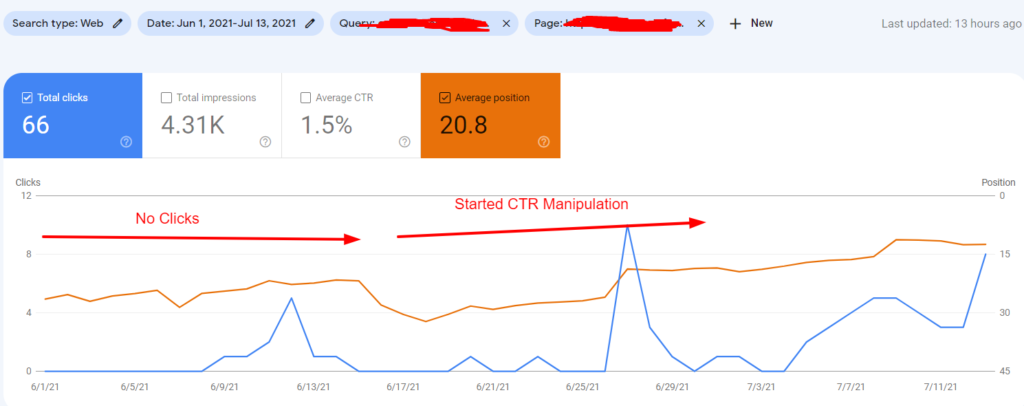CTR Manipulation Press Release-- Announcing New Techniques for CTR Optimization
CTR Control: A Video Game Changer for Digital Projects
The rise of CTR manipulation has indisputably changed electronic advertising and marketing approaches, offering online marketers with devices to enhance involvement and drive website traffic effectively. What ramifications might this balancing act hold for the future of digital campaigns?
Understanding CTR Adjustment
Although click-through rate (CTR) control might feel like a straightforward tactic in digital advertising and marketing, it incorporates a variety of strategies focused on synthetically inflating engagement metrics. This control can take numerous forms, including using click farms, crawlers, or deceitful ad placements that misinform customers right into clicking. These techniques can compromise the integrity of performance information, making it challenging for marketing professionals to assess the authentic performance of their campaigns.
Moreover, CTR manipulation elevates honest concerns, as it undermines the openness of electronic marketing. The reliance on filled with air metrics can result in illinformed advertising decisions, skewing source allocation and campaign approaches. Consequently, companies might spend greatly in networks and methods that appear successful but do not produce real involvement or conversions.

Benefits of Click-Through Price Optimization
Maximizing click-through rate (CTR) is crucial for improving the efficiency of electronic advertising and marketing projects. A higher CTR indicates that a larger proportion of customers are engaging with the content, which can cause raised internet site traffic and far better conversion rates. By improving CTR, brand names can efficiently assign their advertising sources to efforts that produce the highest returns.
One of the main benefits of CTR optimization is the possibility for enhanced ad positioning and reduced costs - CTR Manipulation. Systems like Google Ads compensate higher CTRs with much better advertisement positioning and minimized cost-per-click (CPC), allowing marketing professionals to stretch their budget plans even more. Additionally, a well-optimized CTR can enhance brand exposure, as higher engagement rates commonly correlate with increased natural reach

Strategies for Effective CTR Adjustment
To successfully adjust click-through rates (CTR), marketers can utilize a variety of critical methods that improve user engagement and drive traffic. One fundamental approach is enhancing ad copy to produce compelling and action-oriented language. CTR Manipulation. Making use of solid call-to-action (CTA) expressions encourages users to take instant action, raising the likelihood of clicks
One more efficient technique is A/B testing, which enables marketing experts to compare different advertisement variations. By methodically assessing efficiency metrics, they can identify which aspects reverberate ideal with the target audience, therefore refining their methods for optimal impact. In addition, leveraging visually appealing graphics and succinct messaging can catch focus swiftly, making it more possible that customers will engage.

Last but not least, enhancing landing web pages to make certain a smooth user experience can lower bounce rates and urge more communication, inevitably cultivating greater CTR. By incorporating these methods, marketing professionals can properly adjust CTR to accomplish their project goals.
Determining Success in Digital Campaigns
Measuring success in electronic projects requires a clear understanding of essential efficiency indications (KPIs) that straighten with project purposes. KPIs act as measurable metrics that assist evaluate the efficiency of different methods utilized throughout the pop over to this web-site project. Common KPIs include click-through rates (CTR), conversion rates, cost per purchase (CERTIFIED PUBLIC ACCOUNTANT), and roi (ROI)
To properly determine success, it is vital to establish specific, measurable goals initially of the project. As an example, if the key objective is to enhance brand awareness, metrics such as impressions and engagement prices might be prioritized. In contrast, projects concentrated on direct sales would gain from a much more thorough evaluation of conversion prices and revenue produced.
Normal analysis of these KPIs makes it possible for marketing experts to make data-driven choices, enhancing their strategies in real-time. Using logical devices can aid view it now in monitoring efficiency and determining patterns, permitting for speedy adjustments to improve campaign outcomes. Ultimately, a thorough approach to measuring success not only highlights areas for improvement however additionally enhances the overall effectiveness of digital advertising initiatives, driving sustained development and interaction in the long-term.
Future Trends in Digital Advertising And Marketing
Anticipating the future of electronic advertising and marketing discloses a landscape formed by rapid technological advancements and changing consumer habits. As expert system and artificial intelligence remain to advance, marketers will increasingly take advantage of these technologies to customize projects at an extraordinary range. Anticipating analytics will allow brand names to expect customer requirements, optimizing ad placements and content delivery in actual time.
Additionally, the rise of voice search and smart gadgets is transforming exactly how consumers connect with digital material. Marketers will require to adapt their strategies to make certain visibility across numerous systems, including voice-activated assistants. This change demands a concentrate on conversational marketing, highlighting interaction through dialogue instead of standard promotional strategies.
Additionally, personal privacy issues are motivating changes in data collection practices. Transparency and moral information use will become paramount, driving brand names to promote depend on and commitment amongst customers. The recurring evolution of social networks platforms will certainly likewise influence marketing strategies, with an enhanced emphasis on credibility and user-generated material.
Final Thought
In recap, CTR adjustment stands for a substantial development in digital advertising methods, using instant advantages with improved interaction metrics. The moral factors to consider bordering such methods go necessitate a careful approach to ensure lasting brand name stability and authentic audience connection. By striking a balance in between optimization strategies and genuine interaction, marketing professionals can cultivate sustainable relationships with customers. The continuous evolution of electronic advertising and marketing will certainly depend upon this delicate interaction, forming the future landscape of brand-consumer interactions.